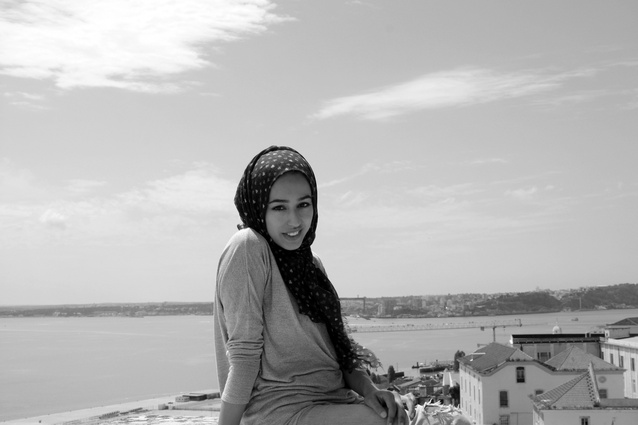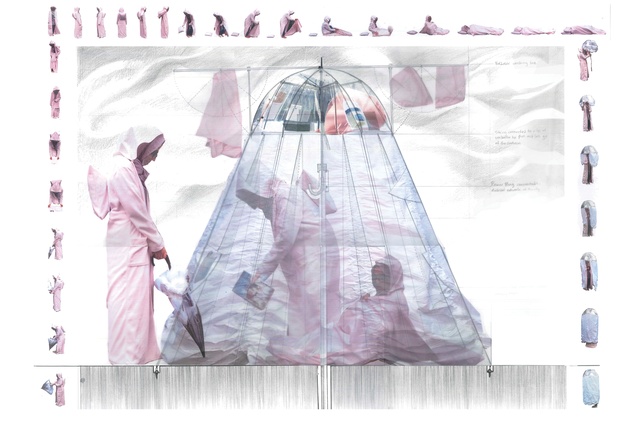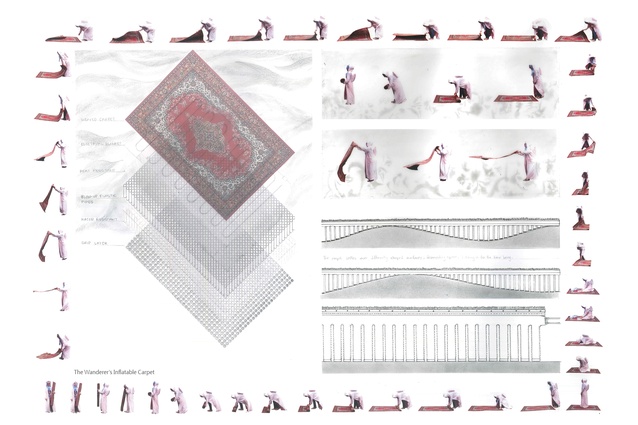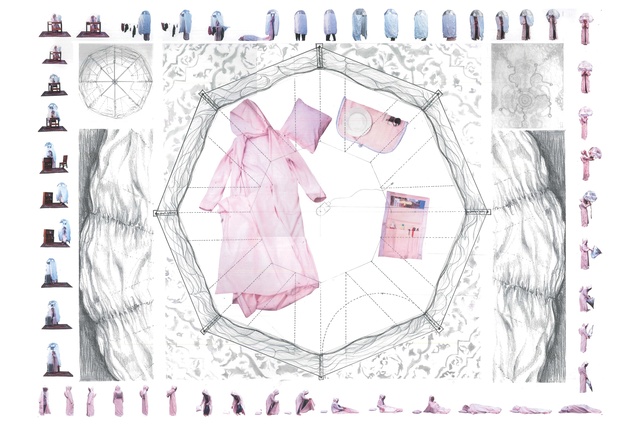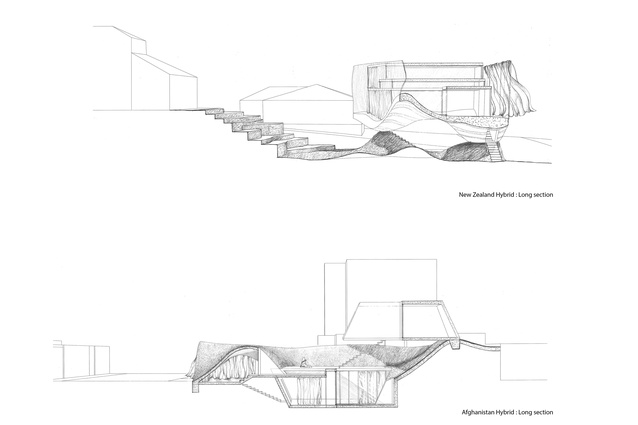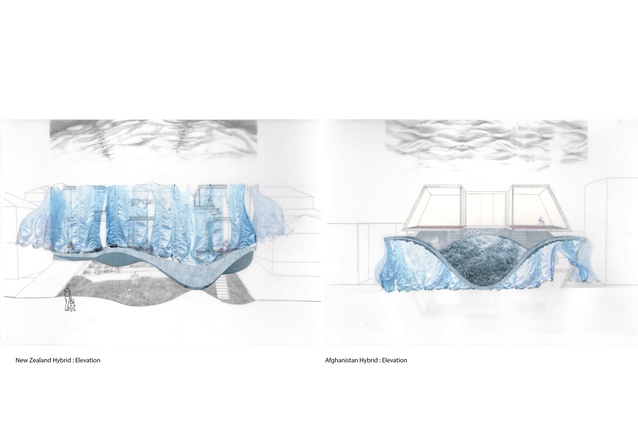Show Us Your Thesis: Salva Shah
ArchitectureNow and the Student Architecture Network New Zealand (SANNZ) have teamed up to present an interview series on the work and thoughts of final year Master of Architecture students at New Zealand's three schools of architecture: Victoria University of Wellington, the University of Auckland and Unitec Institute of Technology.
For the second in the series, Salva Shah of the University of Auckland talks about her thesis, which investigates how the architecture of home can help represent her identity in a new and foreign place.
Student Architecture Network New Zealand: In 20 words, what is your thesis about?
Salva Shah: My thesis is about home and identity, and what it means for home to become a back and forth mode of dwelling for a traveller; for someone who leaves the place of where they supposedly belong and how architecture can aid in representing and integrating their identity in a new and foreign place.
SANNZ: Is this a personal thesis?
SS: Yes, very, but at the same time I have kept it open, so that anyone who has similar notions about home can plug in their own ideas and take something from it. I was born in Pakistan, but I’m from Afghanistan. In our culture we don’t say the place where we were born is where you are from, rather where your parents are from, what language you speak, your background, which is my Afghan side.
We lived in Pakistan then we moved to New Zealand, so I’ve always had this hybrid identity about where I’m from and the different places I feel at home. Whenever we go back to Afghanistan we say when should we go home to New Zealand, and when we come back to New Zealand we say when do we go back home.
There is a feeling of being constantly conflicted about where you’re at home. And you find a space in between, but in either place you never really grasp the idea because it’s not something physical in that sense.
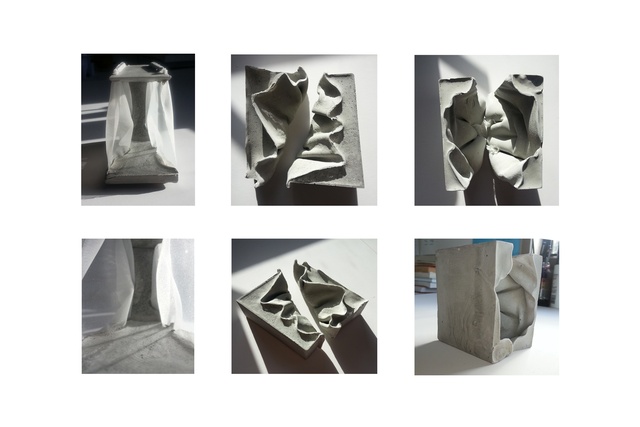
SANNZ: Who’s your supervisor and why did you choose to work with them?
SS: My supervisors are Kathy Waghorn and Aaron Paterson. I chose Kathy because I did a paper with her last year for AD2 which was based around the idea of home. I was considering home from an individual’s point of view, what home could be if you stripped it down to its basic essence, that is if you took house away from home, what does home become.
And it became something that travelled with a wanderer, a mobile being. She carried her home through her objects. Kathy really encouraged me to make the objects, so I would use the objects I already had at home and alter them to be objects that the wanderer would travel with. So it all began with the idea of the wanderer in AD2 and the ideas translated into my thesis. Aaron took up the ideas really quickly and is really helpful as well.
SANNZ: How often do you meet them?
SS: Every week, usually Mondays or Tuesdays, with both of them, sometimes it is one-on-one sessions, other times it’s a group session with a pin up crit.
SANNZ: When you began your thesis did you think it will take this direction?
SS: Not really, no. When I first started I was looking at the wanderer and the city and how the wanderer can open up her home in the city and how the city could provide for that. When you think of travelling and being mobile with your home, they become very antithetical ideas, especially in a place like a city which is really fixed and static in that sense. It doesn’t open up to anybody who’s new and foreign… but then I realised I wasn’t really attached to the idea of the city and the wanderer, I needed to make it more personal and intimate. Then it became about the home and the house, something ephemeral and transitional yet simultaneously physical and permanent.
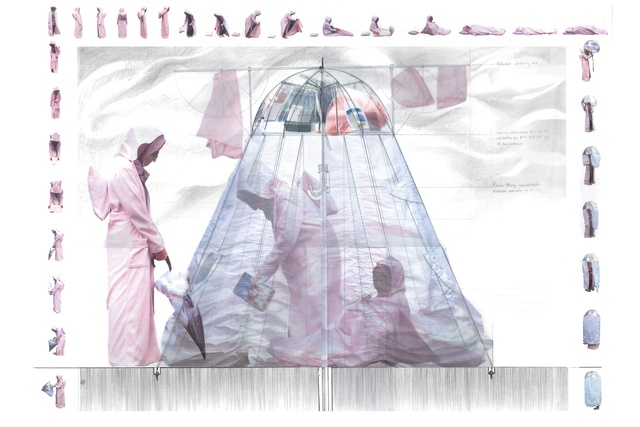
SANNZ: You have a lot of hand drawn work, what made you chose that form of media?
SS: I draw my concepts and ideas from memory… the first house I drew for thesis was the house I lived in in Pakistan, it was based on nostalgia. All my drawings are quite abstracted in terms of the materials and textures that I’ve created from memory and I felt that can only be done through pencil because it’s a direct translation from your memory to hand drawing.
SANNZ: Do you have two sites for your project?
SS: Yes, my two sites are located in Afghanistan and New Zealand. I started off with the wanderer carrying her ideal home, which doesn’t have a fixed place. That’s why it’s ideal because it’s something you can carry with you as you wish, and open it up as you wish. She wears both her home and her identity so in that sense I was able to use the wanderer’s migrant lens to assess the problem which is mobility vs. domesticity. So when she pauses her travels momentarily, she arrives to the physical representations of her home which are static versions of what she would like her home to be.
This is the proposition for the thesis, two hybrid houses. I refer to them as hybrid homes, as one is in Kabul, Afghanistan, and one in Auckland, New Zealand and they are counterparts of one another, in constant dialogue with one another, where a change in the ‘here’ will affect a change in ‘there.’ But the hybrid here is not intended as a state exactly in between, it is not the perfect combination of either/or but you can think of them as non-identical twins parted by geography.
SANNZ: What are your plans for next year?
SS: I’m really looking forward to summer. Having worked the last few holidays I feel like I’ve missed out on summer. And also after doing so much research on home, I really want to go back home! I want to go to Kabul and maybe do some travelling, maybe South East Asia with my brother.

SANNZ: Do you work during thesis?
SS: I do work, but not architecture related. I tutor high school students and I also run a homework centre. I started it last year when I was tutoring my cousins and I realised how much they were lacking because their parents didn’t know the curriculum or how to convey the basics to their children who are used to learning in English, so I would constantly help them.
Then I thought, ‘why don’t I start something to help others in the same situation’, so at the moment our students are children of Afghan migrants and refugees. Two other Afghan girls Naheed and Saliha, who are also uni students, help tutor kids from Year 1 to Year 13, in two sessions on Saturday at New Windsor Primary School.
We’ve had good, positive feedback from the school and community who have been very supportive. It’s four hours of tutoring every week but it’s really rewarding and fun because the kids get really into it and everyone has become good friends because of it. We do lots of fundraisers and the support from charities and the parents is really good too!
SANNZ: Do you feel like architecture school has prepared you for the realities of practice?
SS: I hope so. I think architecture school teaches you to be a critical thinker and designer, which you might not get a proper chance to invest into while working, because in practice you have to do things very quickly and practically.
SANNZ: What do you enjoy most about architecture school and what will you miss the most?
SS: I think what I like most is how communal everything is, we’ve become one big family and you don’t really get that in other degrees. My friends who study law or business etc., they don’t have the same views that I have of uni. I like how everyone knows each other, even the different year groups. Someone will genuinely go out of their way to help you with your project. It’s a very motivating environment and I hope that’s what work will be like.
SANNZ: What’s your go-to meal when you’re at uni?
SS: I hate to say it but I’ve been having a lot of Subway recently. But I also enjoy the Fried Udon Chicken from Bein. I’m pretty sure it’s got MSG in it though…
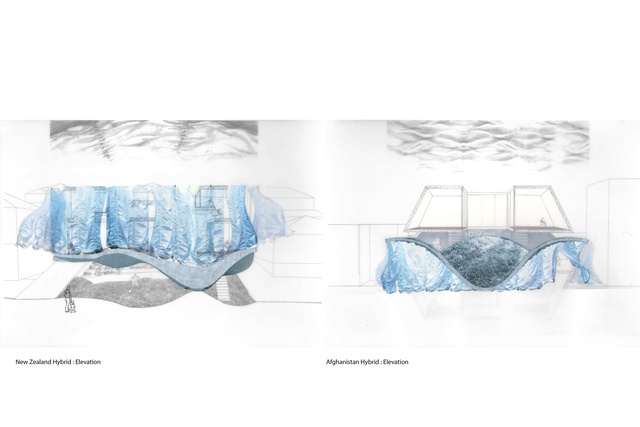
SANNZ: What music do you listen to when you’re in the zone?
SS: Recently, Frank Ocean. Sometimes I change to Arctic Monkeys, Alt-J, Coldplay… Rihanna which I hate admitting because her songs aren’t really the “Salva” songs, hahaha. But I’ve also been listening to this old Afghan musician who has passed away, Ustad Sarahang, it’s really good music. He sings in Farsi, Pashto and Hindi… some of the words I don’t understand but it’s really endearing and creative how he constructs his sentences.
SANNZ: If you could invite any two architects to dinner with you who would you pick?
SS: I’m a massive fan of Alvar Alto and Louis Khan. They’ve got really different work from each other, one’s a lot softer and focuses on a humanist approach to architecture and the other focuses on silence and monumentalism, but also at a human scale.
SANNZ: What are some of your highlights of your time at architecture school?
SS: One has to be the Iberian study tour last year and D4, the 1:1 scale project. That was definitely worth it; so stressful, but worth it. What was amazing was seeing someone walk through your project physically, not just through your drawings. You get to the see the reaction you want from them and it was just great!
The Show Us Your Thesis series is thanks to the Student Architecture Network New Zealand and to the students involved. Read more interviews here.

